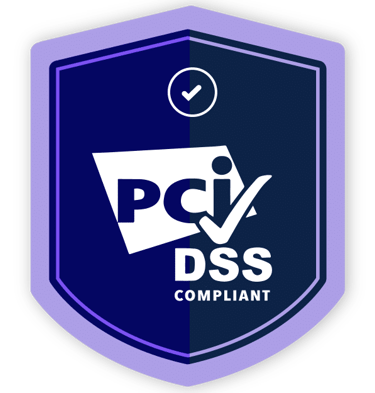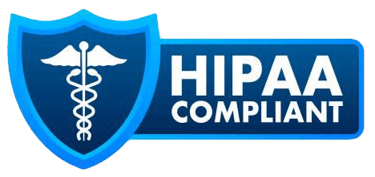How to Expand Your Home Health Agency’s Geographical Service Area (GSA): A Step-by-Step Guide for CDPH and CMS
Learn how to expand your home health or hospice agency’s geographical service area (GSA) in California. HealthBridge Consulting offers expert guidance through CDPH and CMS compliance.


Expanding your Home Health Agency’s Geographical Service Area (GSA) is one of the most effective ways to increase patient volume, build referral partnerships, and reach underserved communities. However, expanding your GSA is a highly regulated process, requiring careful compliance with both the California Department of Public Health (CDPH) and the Centers for Medicare & Medicaid Services (CMS).
This step-by-step guide outlines everything your agency needs to successfully expand its service area while remaining fully compliant with Home Health Medicare Conditions of Participation (CoPs), California state licensing requirements, and operational readiness expectations.
Why Expanding Your GSA Matters
Expanding your home health GSA allows your agency to:
Serve more patients across a larger geographic region
Build relationships with more hospitals, SNFs, physicians, and ALFs
Create redundancy in referral streams
Improve agency revenue and stability
Increase brand visibility across multiple counties
Bring skilled care to underserved or rural populations
But because home health is governed by strict Medicare and CDPH regulations, expansion must be done methodically and legally—without disrupting care, compliance, or billing.
Understanding Regulatory Oversight
To expand your GSA, your agency must satisfy requirements from:
1. CDPH – Licensing Division
CDPH regulates home health agencies at the state level and requires notification and approval for changes to:
Service areas
Locations
Ownership
Governing body
Essential personnel
2. CMS – Medicare Conditions of Participation (42 CFR §484)
CMS requires compliance with:
Patient access standards
Staffing capability
Supervision requirements
Emergency and transportation readiness
Quality assurance/performance improvement (QAPI)
Accurate documentation and episodic management
Learn More.
Without meeting CoPs, Medicare may deny claims or restrict billing.
3. Accrediting Bodies (if applicable)
CHAP, ACHC, or Joint Commission also require internal documentation and policy updates reflecting the new service areas.
Before You Begin: Internal Readiness Checklist
Expanding too quickly—or expanding without required operational systems—can put your agency at risk. Before submitting anything to CDPH or CMS, ensure you meet the following:
✔ Adequate Staffing for the New Service Area
CMS requires that home health agencies have:
Sufficient RNs for evaluation, OASIS assessments, supervision
Therapists (PT/OT/ST)
Medical social workers (MSW)
Home health aides
On-call capability 24/7
If you are expanding to another county, CMS expects local or accessible staffing, not staff driving excessive distances.
✔ Policies & Procedures Updated
Your P&P manual must reflect:
New service zones
Travel expectations
Emergency response structures
Availability requirements under §484.75 and §484.80
Learn More.
✔ QAPI Program Capable of Measuring Additional Regions
CoPs require that QAPI include:
Data-driven metrics
Clinical indicators across all patient populations
New service-area monitoring
Learn More.
✔ Communication Systems & EMR Prepared
Your EMR and communication infrastructure must support:
New zip codes
Tracking clinician assignments
Timely coordination of care
✔ Contracted Services are in Place (if needed)
If expanding far from your main office, CMS allows contracted:
PT/OT/ST
MSW
Home health aides
But RN services should remain primarily directly employed.
Step-by-Step Guide to Expanding Your GSA
Step 1: Conduct a Regulatory Review
Before applying, review:
CDPH Licensing Requirements for home health agencies
CMS Conditions of Participation (42 CFR §484)
Medicare Administrative Contractor (MAC) requirements for your region
Accreditation standards (if accredited)
Regulatory compliance should guide your expansion—not the other way around.
Step 2: Determine Your New Counties or Zip Codes
A GSA expansion may include:
A few additional zip codes
Entire cities
Entire counties (e.g., expanding from Los Angeles County into Orange County)
Important:
If you cross into a new county, CDPH may evaluate your staffing distribution and readiness more rigorously.
Step 3: Update Your Organizational Policies
Before notifying CDPH, revise:
Service area policy
Emergency preparedness plan (must include new counties)
Staffing plan
Transportation and response times
Admission criteria
Transfer and discharge policies
Clinical supervision plans
These documents may be reviewed if CDPH asks for supporting materials.
Step 4: Notify CDPH via the Proper Licensing Process
CDPH requires a formal submission for a change in your GSA. Learn More.
Your CDPH packet should include:
CDPH Change of Information Form
Letter explaining the GSA expansion
Updated policies and procedures
Updated organizational chart (if adding additional management)
Updated service area map
Proof of staffing capability
Any requested supporting documents
CDPH does not always conduct a survey, but they may request:
Staff rosters
Emergency preparedness evidence
Call logs
Staffing and scheduling systems
CDPH approval times vary depending on caseload and region.
Step 5: Update CMS Enrollment (if required)
If the expansion affects:
Branch location
Mobile units
Staffing model
Additional services
Then a CMS 855A update may be required. Learn More.
Most GSA expansions do not require a full CMS update unless:
You are adding a branch
You are adding a sub-unit
You are relocating your primary office
You are changing ownership or governance
However, you must ensure your CMS-approved service-area mapping aligns with your internal operations.
Step 6: Notify Your Accrediting Body (if accredited)
CHAP, ACHC, or Joint Commission may require:
Updated service-area lists
Updated policies
Proof of staffing
QAPI integration
They may verify readiness during:
Annual surveys
Interim self-studies
Off-cycle documentation reviews
Step 7: Set Up Staffing & Operational Infrastructure
Once CDPH and CMS acknowledgment is received, implementation begins.
Staffing Readiness
Hire clinicians who live in or near the new area
Secure contracted therapy staff (if needed)
Ensure availability of 24/7 on-call RN coverage
Add backup staff through supplemental registries
Operational Programs
Equip staff with company-issued phones/tablets
Add zip codes to EMR
Train staff on agency protocols
Update emergency contact lists
Configure scheduling and travel expectations
Orientation to New Regions
Educate all clinicians on local:
Hospitals
Skilled nursing facilities
Discharge planners
Assisted living facilities
Community centers
Referral partners
Building strong relationships accelerates growth in the new GSA.
Step 8: Build Referral Relationships in the New Area
Use your expanded GSA to create:
Hospital and SNF partnerships
Case managers
Hospital discharge planners
Directors of nursing
Physicians
Primary care & specialty clinics
Geriatrics
Cardiology
Pulmonology
Orthopedics
Community networks
Senior centers
Adult day health centers
Home care agencies
Social workers
Provide:
Educational materials
Service area maps
Admission criteria
Brochures
Meet-and-greet sessions
Referral development is critical for making expansion profitable.
Step 9: Integrate the New Area into QAPI
CMS requires home health agencies to demonstrate quality oversight across all service areas, old and new. Learn More.
Update QAPI tracking:
New county/city performance indicators
Timeliness of care in new areas
Missed visits
Hospitalization rates
Patient satisfaction in expanded areas
OASIS accuracy
This ensures your agency meets §484.65 requirements.
Step 10: Ensure Emergency Preparedness Compliance
Your expansion must be reflected in:
Hazard vulnerability analysis (HVA)
Regional risk profiles
County emergency resources
Evacuation routes
Communication systems
Staff training
Drill documentation
Learn More.
CMS auditors and CDPH surveyors frequently review emergency preparedness for expanded service areas. Learn More.
Step 11: Begin Accepting Patients
Once all regulatory notifications, updates, staffing, and policies are in place, you can begin admitting patients in your new geographical areas.
Ensure:
Intake staff are aware of new zip codes
Website and marketing materials reflect the new regions
Referral partners receive updated service maps
Common Mistakes to Avoid
Expanding without proper staffing
CMS may cite you under supervision or care standards.
Serving patients before CDPH approval
This can delay licensing changes and trigger compliance reviews.
Incomplete policy updates
Surveyors will expect your documentation to reflect the new GSA.
Failing to update emergency preparedness
This is one of the highest-cited deficiencies in home health.
Not training staff on new territories
Leads to missed visits, poor continuity of care, and patient dissatisfaction.
Conclusion
Expanding your home health agency’s GSA is a strategic move that strengthens your service capacity, market presence, and patient access. However, the process requires compliance with CDPH licensing rules, Medicare Conditions of Participation, operational standards, and strong internal readiness. With a structured approach, your agency can expand safely and successfully while maintaining the highest level of care.
If your agency needs support, guidance, or full-service management of GSA expansion, HealthBridge offers comprehensive consulting solutions including:
CDPH licensing support
CMS enrollment guidance
Policy updates
QAPI integration
Staffing and operational evaluations
Accrediting body preparation
Complete expansion project management
HealthBridge ensures your expansion is compliant, smooth, and survey-ready from start to finish.







